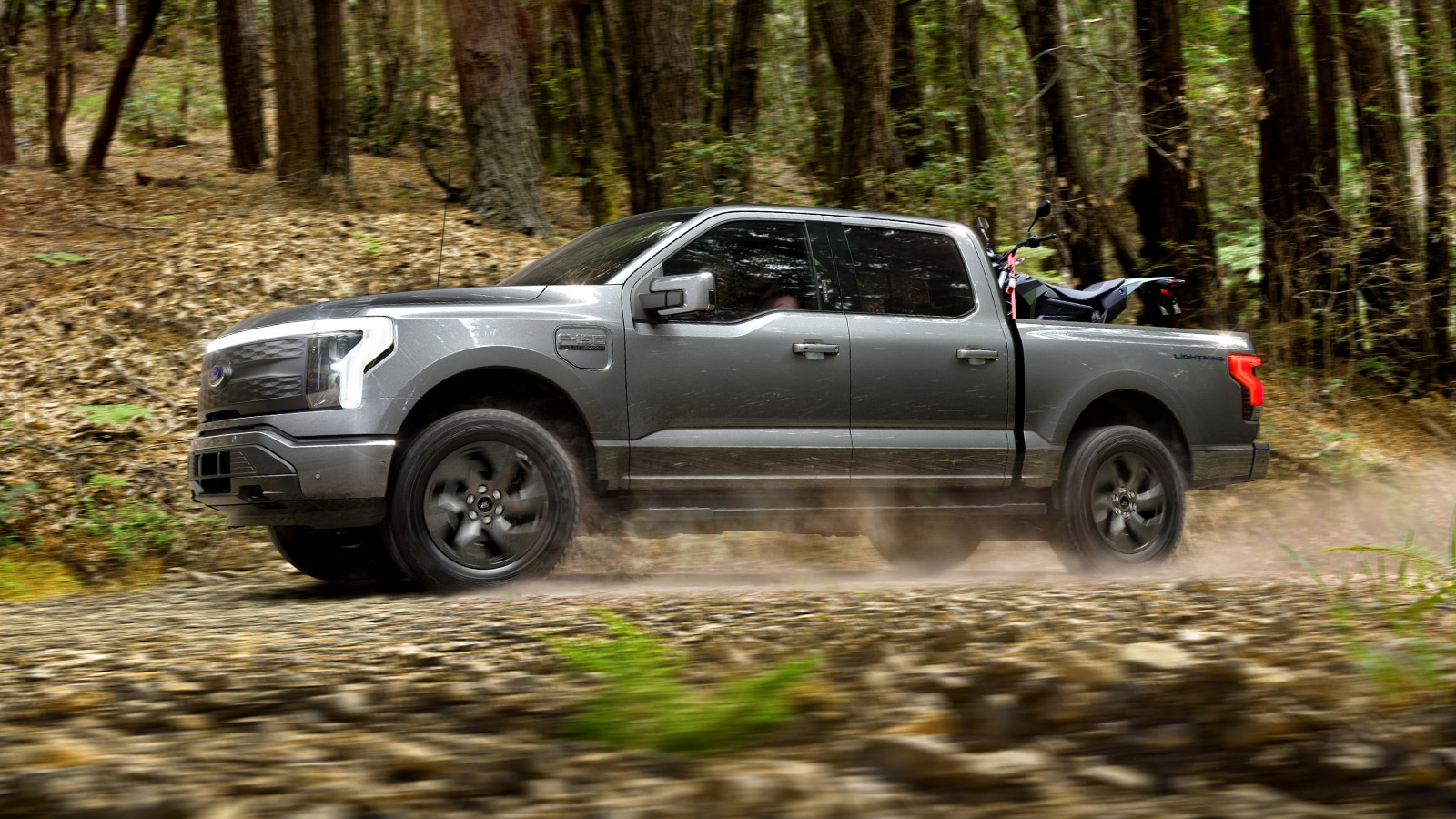While the vast majority of today’s electric vehicles take but do not give electricity, an industry shift is under way toward cars capable of powering up your home in an emergency. That means future emergency preparedness may go well beyond a cache of canned goods, flashlights, and a supply of bandages.
With its F-150 Lightning due in dealers later this year, Ford is poised to be the first automaker to offer an EV that can connect with your house to supply enough power to keep the lights and many appliances on.
Let’s dig into the tech that makes this possible.
Powering a House with an EV
Some electric cars offer bi-directional charging. As it sounds, this tech means the vehicles can both accept and dish out electricity. Bi-directional charging requires a CHAdeMO DC fast charger, which is being phased out in the United States. It also requires using a specific charger rather than the Level 2 ones widely available that plug into a 240-volt outlet like a clothes dryer.
The CHAdeMo phase-out may seem like a step backward. But in reality, the power that vehicles like the Nissan Leaf can feed back into the grid is only enough to keep small appliances on for short stints.
The industry needs big battery packs — the kind you find in big vehicles. Enter the latest crop of EV models, including the Ford F-150 Lightning and the GMC Hummer EV.
Which Electric Cars Can Power Your Home?

The Ford system can deliver 9.6 kW of power, which is enough to keep a typical house going for three days.
Only the Ford F-150 Lightning will come adequately prepared from the factory to plug into a house, although owners will need to buy and install the automaker’s Home Integration System. Plan on a lengthy visit from an electrician if that’s in your plan.
Higher-end extended-range versions of the F-150 Lightning will come with what the automaker dubs its Ford Charge Station Pro. For the most part, this 80-amp charger plugs into a standard 240-volt outlet and works like any Level 2 charger by topping off the F-150 Lightning’s battery pack as needed.
The Home Integration System developed by Ford is available only through solar panel provider Sunrun. It can take your house off the electric grid and switch its power input to the F-150 Lightning parked in your garage or driveway.
At that point, the F-150 operates like a home battery pack as long as you plug it into the Ford Charge Station Pro.
While hardly widespread, home battery packs — such as those offered by Tesla’s Powerwall division — provide backup power in the event of an outage. They’re large versions of the small backup battery packs you might find under your desk at your office.
The Ford system can deliver 9.6 kW of power, which the automaker says is enough to keep a typical house going for three days during a power blackout. The system may be even more helpful during a brownout when an electricity provider may cycle through portions of the grid to reduce the risk of a total system failure on sweltering summer days.
Using Solar Power to Charge Your EV and House
Ford says optional solar panels offered through Sunrun will juice up the F-150 Lightning’s battery on sunny days, though the automaker has not detailed how much power they can provide.
The Tesla Powerwall system uses solar panels to keep its big battery packs charged up. If the power goes out, the system switches over automatically to the Powerwall packs, which can supply as much as 22 kW of backup power when paired with a costly solar roof. That’s more than double the 9.6 kW Ford promises from its F-150 Lightning system, but then again, you can’t drive a Tesla Powerwall or a solar roof.
Future EVs That Could Potentially Power Your House
Here’s a sampling of what’s coming:
- California-based high-end EV startup Lucid says bi-directional charging is coming to its Air model soon.
- Hyundai is launching Hyundai Home in select markets in 2022. With an output of just 1.9 kW, the Hyundai Ioniq 5 will need to send power to a larger battery pack. The system also works with plug-in hybrid electric vehicles.
- The GMC Hummer EV may boast a 1,000-horsepower electric motor, but it is currently limited to 6 kW of bi-directional power.
- VW says that its ID.4 electric car will receive an over-the-air update enabling bi-directional charging sometime in 2022.
How Much Will All This Cost?
At the moment, we don’t know.
The cheapest F-150 Lightning with the Ford Charge Station Pro starts at about $74,000. By itself, the Ford Charge Station Pro costs $1,310, though the company’s website says it’s out-of-stock. Ford and Sunrun do not yet list how much the Home Integration System and installation will cost.












Good selling point. We still sell a lot of generators in New England for occasional storm outage. It’s an important backup especially in winter for people with oil heat since power is needed to start the furnace.
However it seems it would be a tradeoff to use your vehicle for emergency powering of hour home. Wouldn’t you would want to conserve the EV battery for possible emergency use of the vehicle? Maybe a gas or propane powered generator be the compromise solution that would save the day. Hope the generators are not banned from sale here.